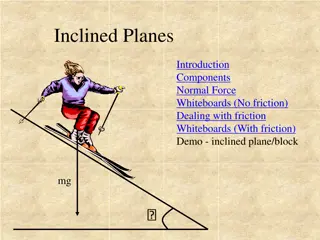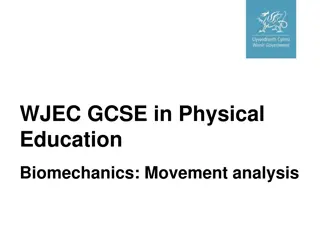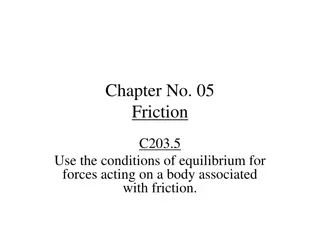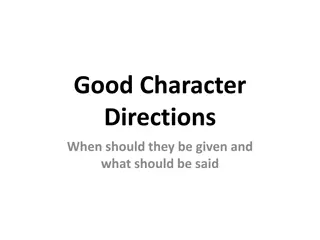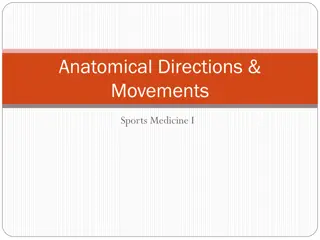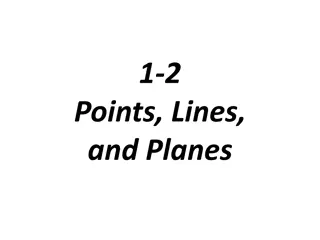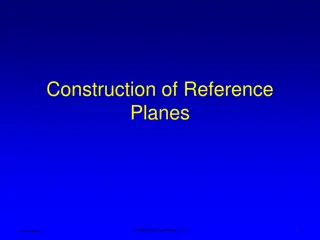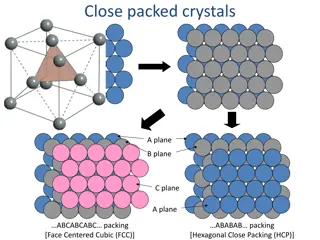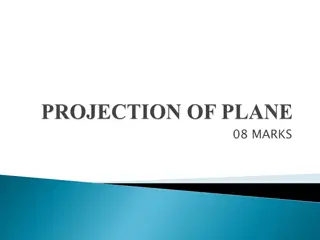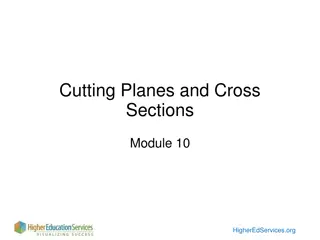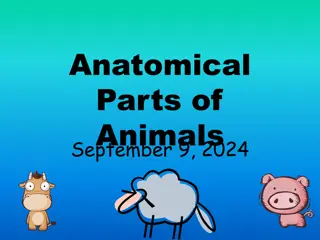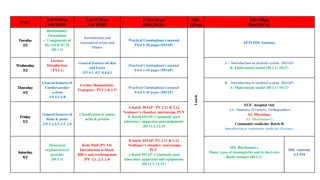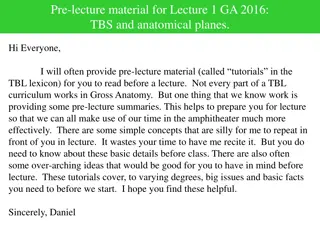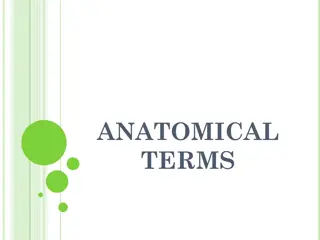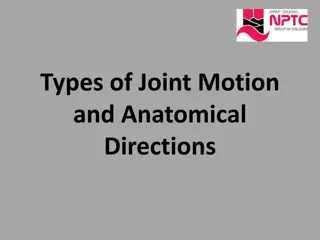Understanding Anatomical Planes, Directions, and Movement in Human Body
Explore the fundamentals of anatomical planes, direction, and movement in the human body. Learn about the three cardinal planes of motion, anatomical positions, directions, and their significance in describing body structures and movements. Gain insights into the anatomical position and how it relates to body positioning. Enhance your understanding of joint movements and body dynamics through this comprehensive resource.
Download Presentation

Please find below an Image/Link to download the presentation.
The content on the website is provided AS IS for your information and personal use only. It may not be sold, licensed, or shared on other websites without obtaining consent from the author. Download presentation by click this link. If you encounter any issues during the download, it is possible that the publisher has removed the file from their server.
E N D
Presentation Transcript
Anatomical Planes, Direction, and Movement To take full advantage of the learning opportunities presented in this resource, Internet access is recommended, Also, view the presentation in Slide Show mode. Click on the Slide Show tab in your tool bar, then click on the From the Beginning tab. As an alternative, you may press the F5 key as a shortcut to begin the presentation.
1. Planes of Motion. Anatomical planes are fixed lines of reference that divide the body in order to describe the location of structures or the direction of movements. The human body moves in three dimensions. As such, the human body has three planes of motion (also called cardinal planes): TRANSVERSE (horizontal); CORONAL (frontal); and SAGITTAL (median). Body motions occur in all three planes ... and foot motion is no exception.
Planes of Motion, continued. TRANSVERSE / HORIZONTAL PLANE: Divides superior from inferior; CORONAL / FRONTAL PLANE: Divides anterior from posterior; SAGITTAL / MEDIAN PLANE: Divides left from right.
Planes of Motion: Another Look. Here is another look at the three cardinal planes. One of the reasons learning about body planes is so important is that it leads to a better understanding of movement specifically, joint movement. Note: Two sagittal planes are shown. The sagittal plane that creates a symmetrical left and right half is also referred to as the midsagittal plane.
The Anatomical Position. Anatomical position is used to describe anatomical relationships. Anatomical position assumes that the: 1. body is standing, 2. feet are parallel to the sagittal plane, 3. eyes and palms of the hands are facing anterior, and 4. thumbs are lateral.
2. Anatomical Positions and Directions. These terms describe the position of one body part in relation to another.
Anatomical Positions and Directions: Review. The MIDLINE is the imaginary line that divides the body into right and left halves. When the word MEDIAL is used, it refers to a structure being closer to or toward the midline of the body. When the word LATERAL is used, it refers to a structure being further away from or away from the midline of the body. When the word SUPERIOR is used, it refers to a structure being closer to the head or higher than another structure in the body. When the word INFERIOR is used, it refers to a structure being closer to the feet or lower than another structure in the body. When the word DISTAL is used, it refers to a structure being further away from the root of the limb (point of attachment) than another structure in that limb. When the word PROXIMAL is used, it refers to a structure being closer to the root of the limb (point of attachment) than another structure in that limb.
Anatomical Positions and Directions: Review, continued. Additional anatomical directional terms include anterior, posterior, superficial, and deep. ANTERIOR refers to a structure being toward the front of the body. POSTERIOR refers to a structure being toward the back of the body. SUPERFICIAL refers to a structure being closer to the surface of the body than another structure. DEEP refers to a structure being closer to the core of the body than another structure.
Anatomical Positions and Directions: Video. Watch the following video for more information about and examples of anatomical positions and directions. Click on the following video title to access the video: Directional Terms and Planes.
Terminology Check. Here is a quick review of directional terms presented. Medial: Toward the midline of the body. Lateral: Away from the midline of the body. Proximal: Closer to the point of attachment. Distal: Further away from the point of attachment.
3. Anatomical Movements. The human body is also divided into anatomical axes. An axis is a straight line around which an object rotates. Movement of a joint takes place in a plane around an axis. In general, the axis of rotation is perpendicular to the plane of movement.
Key Anatomical Movement Terms. Flexion: A movement that decreases the angle between two joint segments. Extension: A movement that increases the angle between two joint segments. Dorsiflexion: Flexion of the foot in an upward direction; decreased angle between dorsum (upper surface) of the foot and the anterior leg. Plantarflexion: Movement of the foot downward; increased angle between the dorsum foot and the anterior leg.
Key Anatomical Movement Terms, continued. Abduction: A motion away from the midline of the body. Adduction: A motion toward the midline of the body. Foot Abduction: Lateral rotation of the foot around the long axis of the leg. Foot Adduction: Medial rotation of the foot around the long axis of the leg. Inversion: Movement of the plantar surface (sole) of the foot toward the midline. Eversion: Movement of the plantar surface of the foot away from the midline.
Motions in Relation to Planes of Motion. SAGITTAL / MEDIAN PLANE: Motion occurs parallel to the sagittal plane and perpendicular to a frontal / coronal axis. Movement: Flexion, extension, dorsiflexion, and plantarflexion. CORONAL / FRONTAL PLANE: Motion occurs parallel to the coronal plane and perpendicular to a sagittal axis. Movement: Abduction, adduction, inversion, eversion. TRANSVERSE / HORIZONTAL PLANE: Rotation occurs around a longitudinal / vertical axis. Movement: Forearm pronation, forearm supination. Note: Foot pronation and supination are movements that occur in multiple planes.
4. Tri-Planar Motion. AND WHEN WE WALK: We move in all three planes at once. "Tri-planar" motion occurs in all three body planes. PRONATION and SUPINATION are tri-planar motions.
Tri-Planar Motion, continued. AND WHEN WE WALK: These activities / movements will take place in the foot: PRONATION: Eversion Turning the sole of the foot outward (frontal plane), Abduction Moving away from the midline (horizontal plane), and Dorsiflexion Moving ankle in an upward direction toward the shin (sagittal plane). SUPINATION: Inversion Turning the sole of the foot inward (frontal plane), Adduction Moving toward the midline (horizontal plane), and Plantarflexion Moving ankle in a downward direction away from the shin (sagittal plane).
Tri-Planar Motion: Video. Watch the following video for more information about pronation and supination, and for a review of terms presented in this lesson. Click on the following video title to access the video: Cardinal Anatomic Planes of Human Foot & Body.
Knowledge Check 1. The plane dividing the body into front and back portions is referred to as the: A. Sagittal/Median Plane. B. Coronal/Frontal Plane. C. Transverse/Horizontal Plane. D. None of the above. Answer: B : Coronal/Frontal Plane.
Knowledge Check 2. This anatomical direction refers to a structure being closer to the head or higher than another structure in the body. A. Proximal. B. Distal. C. Superior. D. Anterior. Answer: C : Superior.
Knowledge Check 3. This anatomical direction refers to a structure being closer to the midline or median plane of the body than another structure in the body. A. Proximal. B. Distal. C. Lateral. D. Medial. Answer: D : Medial.
Knowledge Check 4. Turning the sole of the foot toward midline is called: A. Inversion. B. Eversion. C. Adduction. D. Abduction. Answer: A : Inversion.
Knowledge Check 5. The plane dividing the body into upper and lower portions is referred to as the: A. Sagittal/Median Plane. B. Coronal/Frontal Plane. C. Transverse/Horizontal Plane. D. None of the above. Answer: C : Transverse/Horizontal Plane.
Knowledge Check 6. This anatomical direction refers to a structure being further away from the root of the limb (point of attachment) than another structure in that limb. A. Proximal. B. Distal. C. Lateral. D. Superior. Answer: B : Distal.
Knowledge Check 7. Moving a body part toward the midline of the body is called: A. Flexion. B. Adduction. C. Pronation. D. Abduction. Answer: B : Adduction.
Knowledge Check 8. The heel is (blank) to the toes. A. Anterior. B. Proximal. C. Superior. D. Inferior. Answer: B : Proximal.
Knowledge Check 9. The big toe is on the (blank) side of the foot. A. Distal. B. Proximal. C. Lateral. D. Medial. Answer: D : Medial.
Knowledge Check 10. The knees are (blank) to the waist. A. Superior. B. Inferior. C. Anterior. D. Posterior. Answer: B : Inferior.
Knowledge Check 11. Foot abduction rotates the foot (blank) the midline of the body. A. Away from. B. Toward. Answer: A : Away from.
Knowledge Check 12. The sagittal plane separates the foot into (blank) sections. A. Superior and inferior. B. Anterior and posterior. C. Medial and lateral. Answer: C : Medial and lateral.
Knowledge Check 13. Dorsiflexion is the ankle movement that brings the dorsum of the foot (blank) the shin. A. Away from. B. Toward. Answer: B : Toward.
Knowledge Check 14. Pronation is a motion of the foot comprised of: A. Lateral, medial, and midline. B. Inversion, plantarflexion, and adduction. C. Eversion, abduction, and adduction. D. Dorsiflexion, abduction, and eversion. Answer: D : Dorsiflexion, abduction, and eversion.
Knowledge Check 15. Pronation and supination are (blank) motions. A. Coronal. B. Transverse. C. Tri-planar. D. Sagittal. Answer: C : Tri-planar.
Anatomical Planes, Direction, and Movement. This workforce product was funded by a grant awarded by the U.S. Department of Labor s Employment and Training Administration. The product was created by the grantee and does not necessarily reflect the official position of the U.S. Department of Labor. The U.S. Department of Labor makes no guarantees, warranties, or assurances of any kind, express or implied, with respect to such information, including any information on linked sites and including, but not limited to, accuracy of the information or its completeness, timeliness, usefulness, adequacy, continued availability, or ownership. Produced 2016. HOPE Careers Consortium is a partnership of five institutions of higher education that is building exciting new programs that will provide valuable career education and training in the Orthotics, Prosthetics, and Pedorthics (O&P) sector. The five institutions are: Baker College Flint, Michigan; Century College White Bear Lake, Minnesota; Oklahoma State University Institute of Technology Okmulgee, Oklahoma; Spokane Falls Community College Spokane, Washington; and St. Petersburg College St. Petersburg, Florida. Although the authoring institution of this educational resource has made every effort to ensure that the information presented is correct, the institution assumes no liability to any party for any loss, damage, or disruption caused by errors or omissions. Except where otherwise noted (images from Wikimedia), this work by Oklahoma State University Institute of Technology (OSUIT) is licensed under the Creative Commons Attribution 4.0 International License. To view a copy of this license, click on the following link: Creative Commons Licenses 4.0.


